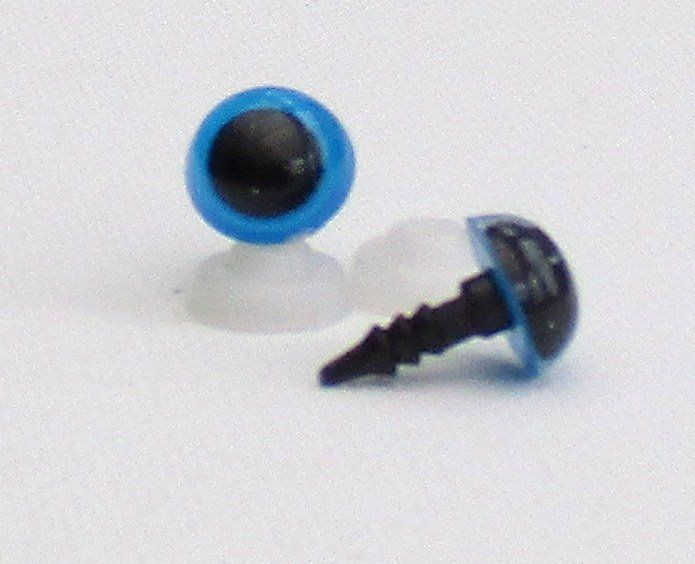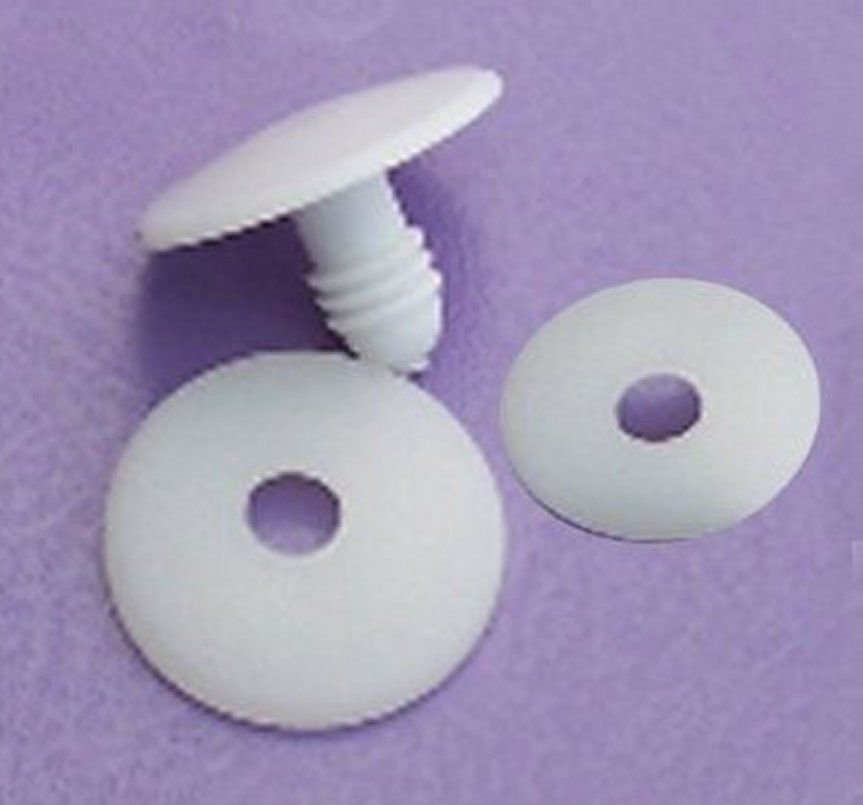KEEPING SOFTIES SAFE
Bright colourful buttons and eyes look so pretty and tempting ! But we need to make softies for little ones safe as well as cute. Making handmade soft toys if great fun but, even as gifts for young family members, we still need to keep in mind safety issues. Tips below are by no means everything you might need and I do recommend taking a peek at the links below if you are thinking of selling your softies, whether as a business or for pleasure : )
STARTING SMALL
Young children love to poke and tug (not to mention chew!) so here are the small items to avoid .
EYES : The traditional teddy eyes are glass with wire hoops. They shine bright as a button and are perfect for artist or collector's bears, but are totally unsuitable for a child's toy.
Choose a good plastic safety eye (many of these now look just like glass eyes). Look for "certified to B55665 / EN71 Safety Standards" to make sure they are of the best quality. I prefer the ones with plastic backing washers as metal washers can poke out around the eye.
JOINTS: Cotter pin joints are the traditional method of jointing teds but, again, due to the metal pins used to secure them, they are not safe for young children's softies.
We need to use plastic safety joints. These are very strong in place so make sure you have them in the correct position (as they will not come off, from one who knows - a leg facing the wrong way in my case ! )
Another method to keep toys soft is to thread joint them instead (but omit the buttons that are sometimes recommended to go with this.) Check that the thread has a good breaking strength (it shouldn't break when pulled).
FABRICS : Anything a young child touches needs to be washable. Although this seems obvious, we can get carried away when we are stitching. Perfectly fine for a collectable or art doll/bear to be made in leathers and lace but for little ones, we need to think of their mums too : )
It's a good idea to pre-wash new fabrics (if possible, of course) to avoid shrinkage later. But we should also check instructions for washing the material. A tip is to make sure all the fabrics you are using for that cloth doll can be washed together, at the same temperature (easily overlooked : )
If material cannot be washed (mohair, most faux furs etc) then test on a sample that you can sponge them with warm, not hot, water. For collector's dolls and bears this would be quite acceptable - perhaps not so for a small child, or their mum. Happily most fabrics nowadays are happy to pop into a washing machine, and at a low temperature so this should not pose too many problems .... whew !
USEFUL SITES : These sites have lots of helpful information on self CE Certification and well worth a look if you are considering making softies for children. There are many more help sites on line, of course, so do "google" for relevant information to yourself, but hope these help and point you in the right direction xx
This site has lots of info and help to self-certification of your toys. You can purchase packs which take you through the different stages of the directive or browse for information. Has some examples of declarations that you might need to make, which I found helpful. Well worth a visit (or two : )
CE Marking Handmade Toys Collective
This site has a more familiar feel with blog/forums between members etc. Subscription is required to join but is quite flexible with monthly, yearly or even life-time subscriptions available and can be paused whenever you like.


